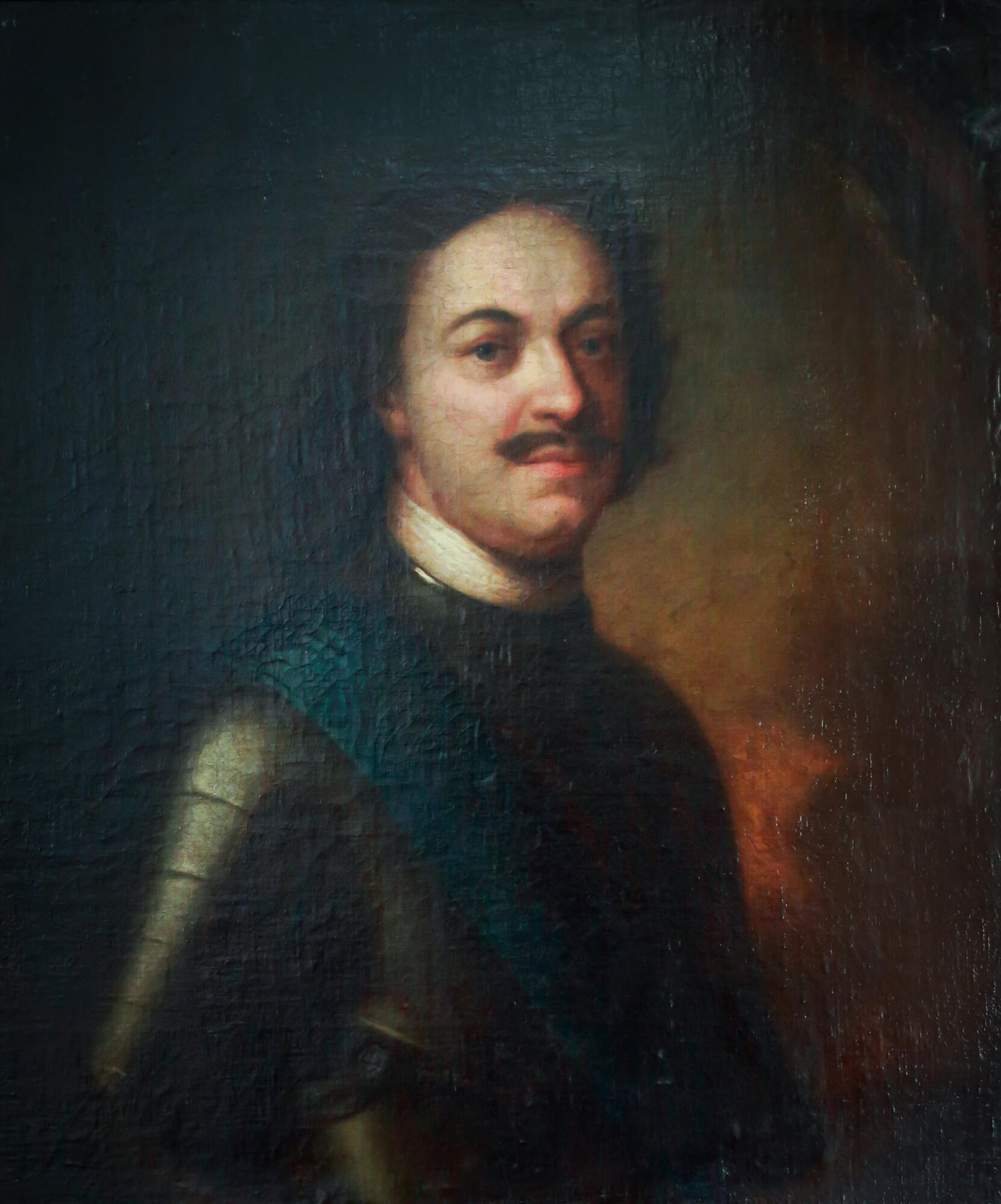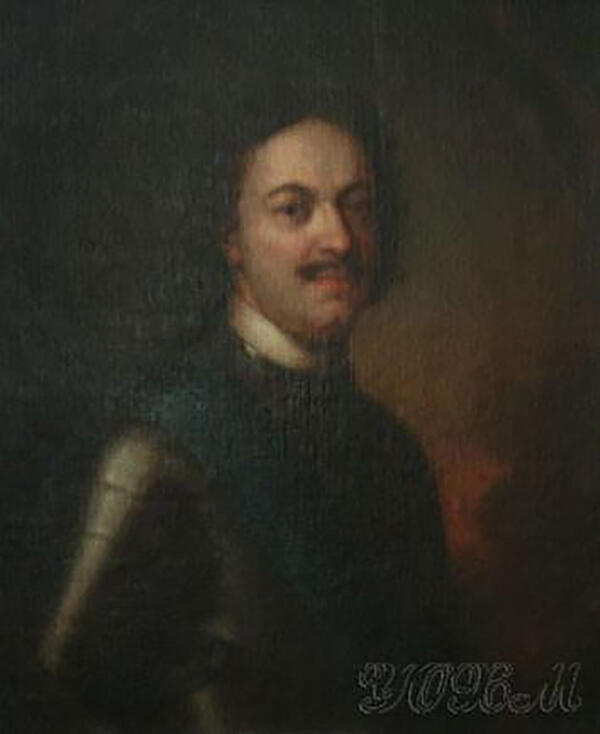In the 18th century, the nobility used to decorate their homes with portraits of members of the royal family. Many painters did not leave their signatures, but their work was clearly influenced by famous artists. The portrait of Emperor Peter the Great by an unknown artist had the style of the works by Andrey Matveev and Carel de Moor.
Andrey Matveevich (or Mercuryevich) Matveev was an extraordinary man. He lived for only 38 years, but managed to lay the foundations of secular painting in Russia, and to become the first professional portrait painter at court.
There is a beautiful legend about the first encounter of the future court artist and the first Russian emperor. The story was published in the middle of the 19th century in “The Art Newspaper” by an unknown author without reference to any sources. Peter I saw the 13-year-old Andrey in the St. Sophia Cathedral in Novgorod: ”… the boy tried to draw the profile of the tsar during the church service. The sovereign noticed him, looked at his scribbled drawing and took the boy to Petersburg.” The emperor sent the young talented man to study in Holland — this was the first internship for the artist. Later, all the best graduates of the Academy of Arts had an internship in Europe at public expense.
Andrey Matveev returned to Saint Petersburg as an experienced master of the European level and took on any work: from the restoration of icons and decorating of royal carriages to the design of the Triumphal Gate and the ceremonial portrait of the monarch. His most famous painting is “Self-Portrait with Wife”, which became an example of a secular portrait of the early 18th century.
Carel de Moor was a Dutch artist, who studied under the masters of the Dutch Baroque. He was a representative of the Leiden school of painting, which originated in Rembrandt’s hometown of Leiden. Carel de Moor painted some of the most famous images of Peter I and his wife Catherine I.
Peter the Great was the last Tsar of All Russia and the first Emperor of All Russia. Peter was the 14th child of Tsar Alexei Mikhailovich Romanov, who died three years after the boy’s birth, leaving the throne to his sons. Having survived the bloody Streltsy uprising as a child, Peter feared a conspiracy throughout his life. He was a domineering, authoritarian and radical ruler. He traveled and studied extensively in Europe, and introduced reforms in all spheres, including the arts. “Peter’s pensioners” (the artists sent by the Emperor to study in Europe) brought back the techniques of world schools of fine art. As a result, Russian painting made a tremendous leap forward.
Andrey Matveevich (or Mercuryevich) Matveev was an extraordinary man. He lived for only 38 years, but managed to lay the foundations of secular painting in Russia, and to become the first professional portrait painter at court.
There is a beautiful legend about the first encounter of the future court artist and the first Russian emperor. The story was published in the middle of the 19th century in “The Art Newspaper” by an unknown author without reference to any sources. Peter I saw the 13-year-old Andrey in the St. Sophia Cathedral in Novgorod: ”… the boy tried to draw the profile of the tsar during the church service. The sovereign noticed him, looked at his scribbled drawing and took the boy to Petersburg.” The emperor sent the young talented man to study in Holland — this was the first internship for the artist. Later, all the best graduates of the Academy of Arts had an internship in Europe at public expense.
Andrey Matveev returned to Saint Petersburg as an experienced master of the European level and took on any work: from the restoration of icons and decorating of royal carriages to the design of the Triumphal Gate and the ceremonial portrait of the monarch. His most famous painting is “Self-Portrait with Wife”, which became an example of a secular portrait of the early 18th century.
Carel de Moor was a Dutch artist, who studied under the masters of the Dutch Baroque. He was a representative of the Leiden school of painting, which originated in Rembrandt’s hometown of Leiden. Carel de Moor painted some of the most famous images of Peter I and his wife Catherine I.
Peter the Great was the last Tsar of All Russia and the first Emperor of All Russia. Peter was the 14th child of Tsar Alexei Mikhailovich Romanov, who died three years after the boy’s birth, leaving the throne to his sons. Having survived the bloody Streltsy uprising as a child, Peter feared a conspiracy throughout his life. He was a domineering, authoritarian and radical ruler. He traveled and studied extensively in Europe, and introduced reforms in all spheres, including the arts. “Peter’s pensioners” (the artists sent by the Emperor to study in Europe) brought back the techniques of world schools of fine art. As a result, Russian painting made a tremendous leap forward.



